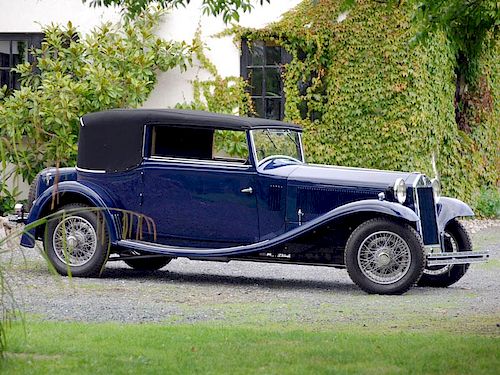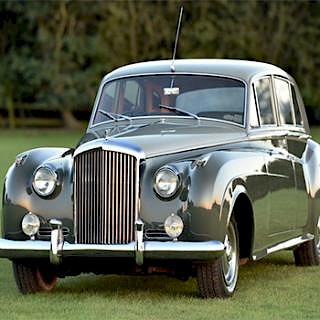Lancia was once renowned for the creation of technically advanced and individualistic motorcars - a
Estimate:
$212,190 - $242,502
Absentee vs Live bid
Two ways to bid:
- Leave a max absentee bid and the platform will bid on your behalf up to your maximum bid during the live auction.
- Bid live during the auction and your bids will be submitted real-time to the auctioneer.
Bid Increments
| Price | Bid Increment |
|---|---|
| $0 | $10 |
| $100 | $25 |
| $500 | $50 |
| $1,000 | $100 |
| $3,000 | $250 |
| $5,000 | $500 |
| $10,000 | $1,000 |
| $30,000 | $2,500 |
| $50,000 | $5,000 |
| $100,000 | $10,000 |
About Auction
By H&H Classics Limited
Oct 14, 2015 - Oct 15, 2015
Set Reminder
2015-10-14 07:00:00
2015-10-15 07:00:00
America/New_York
Bidsquare
Bidsquare : The Imperial War Museum Motor Car Auction
https://www.bidsquare.com/auctions/h-h/the-imperial-war-museum-motor-car-auction-958
H&H Classics Limited info@handh.co.uk
H&H Classics Limited info@handh.co.uk
- Lot Description
BID ON THE-SALEROOM.COM
Lancia was once renowned for the creation of technically advanced and individualistic motorcars - a reputation founded on the memorably progressive Lambda series of the 1920s. Larger eight-cylinder models appeared from 1929, the first of which was the 4-litre Dilambda, which followed the firm's logical train of design with above-average performance, precise steering, and outstanding handling; all of which further fostered a loyal customer base that frequently showed little concern for other marques but Lancia. The Lambda itself proved to be such a landmark model that in 1931 the company felt required to replace it by not one but a pair of newcomers; namely the four-cylinder Artena and the larger V8-powered Astura. The chassis of the latter were successfully employed by various carrozzerias to create an array of desirable Coupes, Convertibles and Saloons.
As with the preceding Lambda, Lancia developed the Astura though several series - four to be precise. Examples of the first two were powered by the company's proven 2606cc SOHC monobloc 'narrow-vee' V8 unit of 72bhp. Ignition was by coil, the coolant was circulated by pump and the engine fed by a downdraft Zenith carburettor. The unit drove through a four-speed manual gearbox that featured the then popular feature of a 'silent' third gear. The model's ultimate speed was widely quoted as c.75mph. The Astura continued in production until 1939, receiving a larger capacity (2973cc) and two increases in wheelbase along the way. Little separated the series 1 and 2 cars, of which 496 and 750 examples were produced respectively. At some £540 for the chassis alone, the Astura was an expensive proposition, but a technically rewarding one too.
The example now offered is a righthand drive series 2 Pininfarina-bodied Coupe of 1932 that was delivered new to a Robert Fraser of Arbroath, Scotland. The car's comprehensive history file includes the original log book showing each of the changes of ownership that took place North of the border and then in London prior to the war - they include an entry for a Betty Dorian, who seemingly retained the Astura for just three months before selling it to an H D Walsh of Dublin in January 1939. It has remained on the island ever since, chalking up a further five keepers, the most recent of whom has retained it for some 18 years.
Apparently, by the time they acquired the Lancia, though complete, it was in very weary condition. The level of recent restoration has therefore been extensive and benefited the engine, front suspension, transmission, and cooling system. The bodywork and interior has also received much attention - following structural repairs to the body, the passenger compartment was then: retrimmed, replicating the original pattern of upholstery; new carpets tailored to fit; the veneer of the wood trim refurbished as required; and the hood recovered.
While all available evidence points to the coachwork being that of Pininfarina, some clues suggest the interior trim could have been the work of another firm. Anecdotal evidence that 'AGY 383' was displayed and sold from the James Young stand at the 1932 Olympia motor show also remains unconfirmed. Whatever, it is a clearly fine and very collectable car in splendid order. - Shipping Info
-
Shipping info
-
- Buyer's Premium



 EUR
EUR CAD
CAD AUD
AUD GBP
GBP MXN
MXN HKD
HKD CNY
CNY MYR
MYR SEK
SEK SGD
SGD CHF
CHF THB
THB











